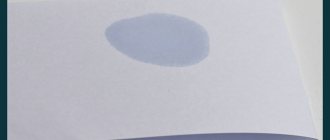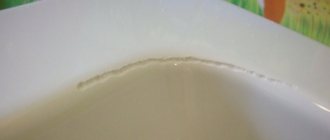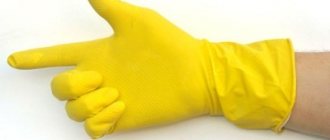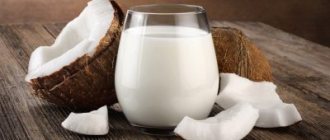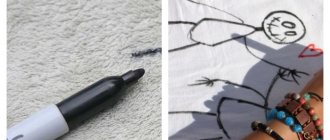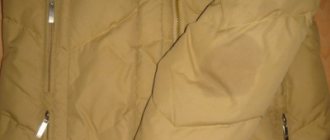What could be more annoying than your own carelessness or someone else's carelessness? Have you ever watched in confusion as a stain from spilled coffee or tea slowly spreads across an important document? Or be angry with yourself for putting paper on the grease-stained table? Happened to everyone!
Unnecessary pieces of paper can be thrown into the trash, but to restore an important document, you will need some knowledge and advice from those who have already found themselves in similar situations.
Coffee and tea
Often at work, people study documents over a cup of coffee, and at home they read their favorite book with tea in their hands. Sooner or later this leads to the drink spilling on the paper. You can save her with the help of folk remedies. For this we need a deep plate with a wide bottom, water, vinegar, napkins. Mix vinegar and water in a 3:1 ratio - this will not damage the structure of the paper. Place the document with the stain in a container with this solution and wait until the paper is soaked. Then take it out of the plate and blot it with a dry cloth several times.
If after this the stain does not come off, then you can use a solution of chlorine bleach with water in a ratio of 1:3. Once mixed, take a soft-bristled toothbrush and gently scrub the area you want to clean. Try to use minimal force. After this, place the document between two sheets of wax paper and iron it. These methods are not suitable for cleaning documents with ink stamps or handwritten text.
Eliminate odor
There is a simple but effective method to eliminate the smell of damp book pages:
- Take regular baking soda.
- Turn over the pages of the book.
- Cover and leave for several days.
- Shake out the baking soda with your hands/hairdryer/vacuum cleaner.
Soda is known for its ability to absorb unpleasant odors; it is often used to freshen rooms, for washing and cleaning various items, including books.
Fat
If grease gets on the paper, you need to try to clean it as quickly as possible, since over time the stain will become more and more difficult to remove. To do this, take an ordinary thin napkin and place it on the stain, then iron it with a hot iron. As soon as the napkin becomes saturated with grease, replace it. Repeat the procedure until the stain comes off.
You can also use crushed chalk. To do this, pour an even layer of powder onto the stain, cover it with a sheet of paper and iron it with an iron. You can do without heat exposure: leave the chalk for three days, then carefully shake it off. Instead of chalk, you can use clay diluted with water in a 1:1 ratio.
Read also: How to remove stains from a down jacket?
Cleaning the sofa using improvised means
How to choose the right mattress?
Features of such pollution
Before you begin cleaning, you need to become familiar with the basic characteristics of stains and how they affect the cleaning process.
Freshness
The easiest way to get rid of greasy marks that appeared on the surface recently. Such contaminants have not yet had time to be absorbed into the paper and therefore everyone can cope with their cleaning. Spots that appeared 5-20 minutes ago are considered fresh.
Paper color and type
It is known that paper can differ in density and surface color. It is quite easy to remove grease from a thick paper covering, since it can be cleaned in any way. You will have to work more carefully with colored and thin paper. Detergents that are too aggressive can damage it.
Document importance
The choice of stain removal method directly depends on the importance of the documents. For example, if a school notebook was dirty, you can try to clean it using any method.
If we are talking about a passport or other equally important documents, you will have to select more delicate methods for removing stains.
Features of working with paper
Paper is a material that needs to be handled more carefully. Therefore, experts do not recommend cleaning it from stains using mechanical methods using large amounts of liquid.
See also
How to quickly remove iodine from the skin, 15 best ways and effective methods
Ink
This stain can be removed from paper using a household stain remover. Apply it to the stain, saturate the paper, and then blot it with a dry cloth. This technology also uses hydrogen peroxide. Another effective remedy is alcohol mixed with glycerin. Mix these substances in a 1:1 ratio and apply to the stain. After 10 minutes, wipe this area with a napkin - there will be no stain. If you need to remove a small amount of ink, you can use a blade. Gently clean the desired area, then rub with a pencil eraser.
Storage recommendations
The way books are kept largely determines their condition. The storage location should not be damp. Recommended temperature and air humidity parameters: 18-22° C and 50-60%.
Books should not be exposed to direct sunlight. Store them on closed shelves in an upright position. Do not place them too tightly and on top of each other - the pages should “breathe”.
Don't forget to wash the shelves where books are stored. Return everything to its place only after the cabinets have completely dried.
Cleaning is important not only for the safety of books. Some people are allergic to paper dust. Having picked up a copy, instead of the pleasure of reading, they get streams from their eyes and nose. Take care of the proper storage of books and the good health of the people in the house, and then the library will become your pride.
We recommend: What and how to clean a rug from dust, dirt and odors at home?
Traces of dirty fingers
The most effective means for removing this type of contamination is laundry soap. Rub the stain with a damp block, then blot it with a napkin. Place the wet sheet under a press to prevent it from drying out. In order not to disturb the structure of the paper, it is best to use special blotting paper instead of a napkin.
In order to successfully remove any stain, it is important to do it as soon as it appears. The longer you wait, the more difficult it will be to deal with the contamination. To remove stubborn stains, you will need to repeat the procedure several times or combine methods.
Saving documents from coffee stains
It is probably difficult to find a person who would not start his morning with invigorating coffee. By the way, this drink plays not only the role of a kind of alarm clock, but also a means of establishing business partnerships and even close relationships. How many contracts have been signed and deals concluded over a cup of aromatic espresso. And how many couples found each other in a cafe thanks to a delicious cappuccino or an exquisite latte decorated with a heart or flower by a professional barista? Coffee beans are used to scent a room, decorate paintings, and, of course, to make various crafts such as topiary. Zena coffee is a very popular ingredient in cooking and is included in many desserts and drinks. Women use this aromatic raw material for cosmetic procedures and to create various cosmetics. Well, black thicket is a means by which you can find out your future.
But for all its advantages, coffee has one significant drawback - spilled coffee can ruin your favorite dress, a new sofa and an important document. Fortunately, timely measures to eliminate the “coffee flood” make it possible to correct the situation.
We save documents
With fabric everything is more or less clear. As a last resort, you can sew a patch on your favorite dress and reupholster the sofa. But what to do when coffee spills on paper? Throwing it away is the first thing that comes to mind. But what if paper means an important document? In this case, he will have to be saved in other ways.
Starch diluted in water should be applied to the stain.
How to remove a grease stain on paper - useful tips
Basic recommendations when searching for information on how to remove greasy stains from paper:
- Start fighting pollution immediately after it appears.
- Don't rub. Even with weak friction, the sheet is damaged and looks unpresentable.
- Do not use flour. It perfectly absorbs any liquid - yes. But after absorption, the dough turns out, which for some reason everyone forgets. But you won’t be able to remove the dough from the paper without damaging the sheet.
- Do not use large amounts of liquid. A wet sheet becomes deformed and breaks.
A greasy stain on a document is not a death sentence. Of course, you will have to act carefully. If there is nothing at hand except a napkin, then it, applied to the paper in time, will take on half the work of removing dirt.
Little tricks
There are features of removing coffee traces from paper media, among which I would especially like to highlight the following:
It is possible to save a business plan or contract from coffee stains, but it is better to either refrain from reviewing important papers while enjoying coffee, or “keep” them in transparent files.
Coffee spilled on equipment is the worst thing that can happen in the office - the keyboard will have to be disassembled and washed, but the laptop may not be saved at all. It is not for nothing that in most offices of Western companies, drinking coffee at the desk, as well as tea, is prohibited. Return to content
Little tricks
There are features of removing coffee traces from paper media, among which I would especially like to highlight the following:
It is possible to save a business plan or contract from coffee stains, but it is better to either refrain from reviewing important papers while enjoying coffee, or “keep” them in transparent files.
Coffee spilled on equipment is the worst thing that can happen in the office - the keyboard will have to be disassembled and washed, but the laptop may not be saved at all. It is not for nothing that in most offices of Western companies, drinking coffee at the desk, as well as tea, is prohibited. Return to content
How to remove coffee from white clothes using traditional methods
It is not necessary to buy expensive chemicals; folk remedies can do the job.
Laundry soap
It is grated, poured with boiling water and stirred until the soap shavings are completely dissolved. The resulting solution is cooled to room temperature. The thick mass is generously applied to the stain with a brush or sponge. After half an hour, rinse under running warm water. The procedure is repeated until complete cleansing.
Ammonia
A powerful remedy for coffee stains. For maximum effect, ammonia (50 ml) is added to water (300 ml) and heated. Add 50 g of laundry soap, grated, to the heated mixture.
The thick substance is stirred until smooth and left in a water bath for 7-10 minutes, after which it is cooled to room temperature. The resulting composition is applied to coffee stains with a sponge or cotton pad. The treated item is left for 20-30 minutes, after which it is washed in the usual way.
Salt or soda
Add 2 tbsp to 1 liter of warm water. l. soda and the same amount of salt, then stir until completely dissolved. Soaked clothes are soaked in the solution for two hours, after which they are washed in the usual way.
Lemon
Before treatment, wipe the coffee stain and the area around it with a piece of ice. The juice of one lemon is mixed with tbsp. l. water or tbsp. l. citric acid is diluted in a glass of water.
The resulting liquid is applied to the coffee stain and left for 30 minutes. After this, the item is washed by hand in warm water and soap.
Glycerol
One of the most effective ways to remove coffee stains. Before use, glycerin is heated in a water bath (up to 30-40 degrees). Next, a cotton pad is moistened with it and the contamination is treated. The item is left for half an hour, then washed in a machine with powder.
To enhance the effect, mix glycerin with table salt to obtain a paste-like mass. It is applied to the coffee stain and left for 10-15 minutes. To prevent the substance from drying out, you need to cover the area with polyethylene. After time has passed, the item is washed with warm water. If necessary, repeat the procedure.
Vinegar
Mix acetic acid and soda in equal proportions. The finished mixture is applied to the coffee marks and left for half an hour, then washed in the usual way.
Turpentine oil
Turpentine oil is purified turpentine, so wear gloves when working with it. To remove stains use:
- 50 ml of turpentine oil and 30 g of table salt;
- glycerin and a mixture of turpentine oil in equal proportions.
Any of these mixtures are applied to the contaminated area using a sponge and left for 30 minutes.
Cleaning up
In principle, coffee stains can be removed from almost any surface, regardless of the material. Most often, clothing and furniture suffer from your favorite espresso or cappuccino. When getting rid of coffee stains, speed is important. That is, the sooner you start removing the brownish and fairly hot liquid, the greater the chance that the dress can still be worn more than once, and the sofa or chair will not have to be covered with a blanket. The longer the stain remains on the surface, the deeper the liquid penetrates into the fabric or skin and, accordingly, the more time and effort it will take to remove it 100%.
As an ambulance for spilled coffee on a fabric surface, you can use a paper towel or napkin. This maneuver will prevent the coffee from soaking and spreading. But you should absolutely not rub the dirt, as this will only increase its size. It is enough to “get wet” the affected area well and move on to the next stage of removing drips.
If coffee gets on upholstered furniture, then instead of napkins it is better to use a sponge, which should preferably be moistened with a solution of water and soap. A few “soaking” movements with the sponge and the brown mark, if it doesn’t disappear, will become less concentrated and rich. It will be much easier to remove the “sponge-lightened” stain later. True, to completely remove it you will have to use special means. Some people use a glass cleaner, some buy special stain removers, while others use a “folk” recipe, that is, kitchen salt. By the way, ordinary salt can remove not only traces from espresso, but also from tea, cocoa, etc. Before you begin removing stains from furniture or clothing, make sure that the product you choose does not contain substances that can harm the structure of fabric or skin.
If coffee gets on your clothes, after “blotting” the contaminated area with a napkin, it is advisable to place the cloth under running cold water. Moreover, the water should not fall on the front side of the dress, but on the back. This will “dilute” the stain and make it lighter. It will be much easier to remove “lighter” stains later. After such a light shower, the fabric must be ironed from the wrong side too.
Return to content

